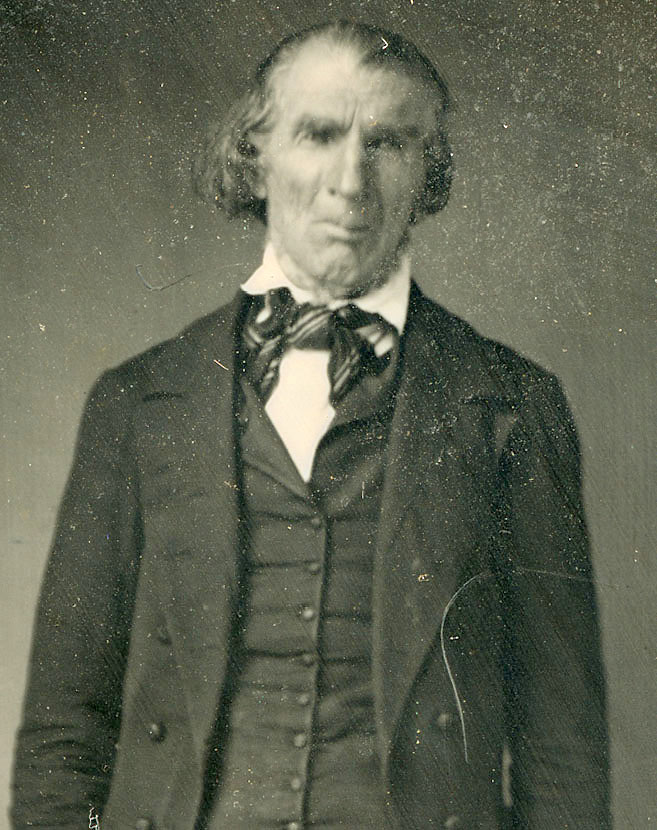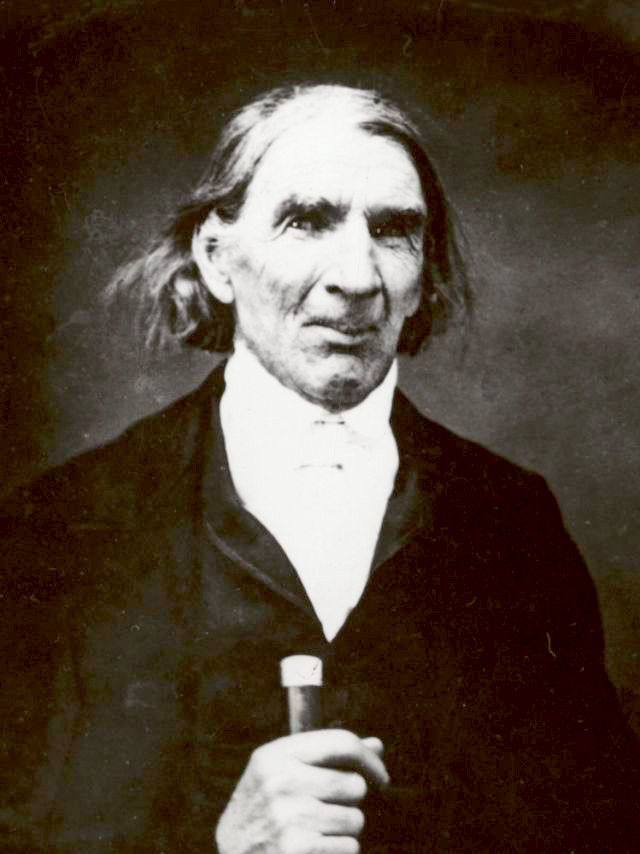John Smith
(1781-1854)




D&C 102:3
By Susan Easton Black
John Smith received a copy of the Book of Mormon in August 1830 from his brother Joseph Smith Sr. The more John and his wife read that book, the more their thoughts turned to the message of the Restoration. John stopped worshipping with the Potsdam, New York First Congregational Church. In January 1832 he was expelled from the Congregational Church because of his belief in the truthfulness of the Book of Mormon.
John entered baptismal waters on January 9, 1832. His son George A. Smith wrote of his father’s baptism:
My father had been for several years very feeble in health and for about six months previous to his baptism had not been able to visit his barn. The neighbors all believed that baptism would kill him. I cut the ice in the creek and broke a road for 40 rods through the crust of two feet of snow and the day was very cold. The neighbors looked on with astonishment expecting to see him die in the water, but his health continued improving from that moment.1
When threatened by neighbors and former friends because of his new religious commitment, John sold his home and farmland, settled all remaining debts, and moved his family to Ohio to be with others of his faith.
The Smiths’ arrival in May 1833 at Kirtland was greeted with great joy by the Saints. John, who became affectionately known as Uncle John, was called on February 17, 1834, to serve on the Kirtland High Council (see D&C 102:3). On September 26, 1835, he was given a patriarchal blessing by his brother Joseph Smith Sr. In the blessing John was promised—
Thy posterity shall be blessed, and have power to do much good in their day and generation; thy mind shall be enlarged and thy seed and posterity shall become great. … thou hast been afflicted much, but the Lord will make it up unto thee, for thou shalt be had in remembrance at the day of the coming of the Lord. … The number of thy years shall be according to thy faith, even to be like those of Moses.2
Within a year of receiving that wonderful blessing, Uncle John and his brother Joseph served a mission to the eastern states, sharing the message of the Restoration from New York to Pennsylvania and “confer[ring] on the brethren their patriarchal blessings.”3 Upon returning to Kirtland, Uncle John was called to be an Assistant Counselor to the Prophet Joseph Smith in September 1837. His service as a counselor ended when religious persecution forced him and other Latter-day Saints to leave their holdings in Kirtland. As John left Kirtland, he wrote, “What the Lord will do with us I know not, altho he slay me I will trust in him. We are like the ancients wandering from place to place in the wilderness.”4
Uncle John and his family moved on to Missouri and settled in Adam-ondi-Ahman. In that fledgling community, John served as president of the stake. His service in that calling ended when mobs drove him from his home, leaving him to journey in the wilderness areas of Missouri in the winter of 1839. At what was surely a low point in his life, he wrote that the Prophet Joseph “took the shoes from his feet and gave to me.”5
Uncle John held several leadership positions over the next few years. He was president of the Zarahemla Stake in the Territory of Iowa and later president of the Nauvoo Stake. At age sixty-five, he joined the Latter-day Saint exodus from Nauvoo to the West. In the Salt Lake Valley, he became president of the Salt Lake Stake. In the October 1848 general conference, Uncle John was sustained as the fifth patriarch of the Church. He gave 5,560 patriarchal blessings.
Just before his death on May 23, 1854, at age seventy-two, he sent the following message to Church leaders: “Father John Smith Patriarch does not wish the brethren who meet in the Council to pray for him to live for I know it is the will of the Lord to take me to himself when he pleases & I want him to do it in the best possible manner for my ease and comfort.”6
1. Irene M. Bates, “Uncle John Smith, 1781–1854: Patriarchal Bridge,” Dialogue 20 (Fall 1987), 80.
2. Patriarchal Blessing of John Smith on September 26, 1835, in H. Michael Marquardt, Early Patriarchal Blessings of The Church of Jesus Christ of Latter-day Saints (Salt Lake City: The Smith-Petit Foundation, 2007), 53–54
3. Smith, History of the Church, 2:446.
4. John Smith Journal, April 23, 1838, George A. Smith Family Papers, Manuscripts Division, Special Collections, Marriott Library, University of Utah, Salt Lake City.
5. Bates, “Uncle John Smith, 1781–1854: Patriarchal Bridge,” 83.
6. Bates, “Uncle John Smith, 1781–1854: Patriarchal Bridge,” 87.
Additional Resources
- Biography of John Smith (josephsmithpapers.org)

